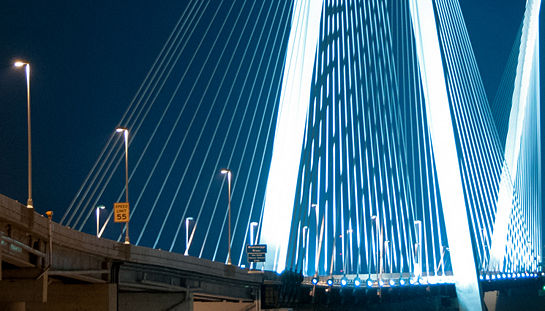Difference between revisions of "Category:901 Lighting"
m (new photo) |
m (new photo) |
||
| Line 1: | Line 1: | ||
| − | [[image:901 | + | [[image:901 2014.jpg|right|545px]] |
Nighttime crash rates are higher than daytime rates partially due to reduced visibility. Fixed-source lighting such as [[901.9 Luminaires|a luminaire]] tends to reduce crashes in urban and suburban areas with concentrations of pedestrians and intersections. | Nighttime crash rates are higher than daytime rates partially due to reduced visibility. Fixed-source lighting such as [[901.9 Luminaires|a luminaire]] tends to reduce crashes in urban and suburban areas with concentrations of pedestrians and intersections. | ||
Revision as of 11:18, 11 February 2014
Nighttime crash rates are higher than daytime rates partially due to reduced visibility. Fixed-source lighting such as a luminaire tends to reduce crashes in urban and suburban areas with concentrations of pedestrians and intersections.
Different policies apply to:
- lighting to be provided, operated and maintained at state expense,
- lighting to be provided, operated and maintained at the expense of the local political subdivision,
- state participation in continuous freeway lighting by a local political subdivision,
- and lighting proposed by other political subdivisions on state highways.
When designing, installing, programming and maintaining lighting, factors such as light source and intensity and circuiting must be addressed. Guidelines for high pressure sodium luminaire performance and computation of roadway illumination, future lighting and dusk-to-dawn lighting policy are discussed in this article.
There are many aspects to be considered when inspecting construction quality and this article provides construction inspection guidelines, guidelines for material inspection and laboratory testing.
This article also includes a glossary, a discussion on the preparation of plans and electrical components.
Nonstandard Lighting Structures
If any lighting installation being considered will use a special or nonstandard structure or with dimensions exceeding those shown in the Standard Plans, Traffic and Bridge are to be consulted early in the project planning regarding the installation’s feasibility and necessary contract provisions. Examples of this situation are high mast lighting and exceeding lengths on the Standard Plans.
Since designing details for nonstandard installations is typically performed by an outside engineer employed by the contractor or producer and is certified to MoDOT, the project contract documents must include appropriate requirements about the design standards used. Since structures beyond MoDOT's standard designs are involved, a performance-based specification of the design signed and sealed by a Missouri Registered Professional Engineer is needed from the contractor. Certification to the current AASHTO Standard Specifications for Structural Supports for Highway Signs, Luminaries and Traffic Signals including the latest fatigue provisions is required.
Pages in category "901 Lighting"
The following 18 pages are in this category, out of 18 total.
9
- 901.1 Lighting to be Provided, Operated, and Maintained at State Expense
- 901.2 Lighting to be Provided, Operated, and Maintained at the Expense of the Local Political Subdivision
- 901.3 Lighting to be Adjusted at State Expense and Operated and Maintained at the Expense of the Local Political Subdivision
- 901.4 State Participation in Continuous Freeway Lighting by a Local Political Subdivision
- 901.5 Future Lighting
- 901.6 Programming
- 901.7 Light Source and Intensity
- 901.8 System Voltage
- 901.9 Layout
- 901.10 Preparation of Plans
- 901.11 Light Emitting Diode (LED) Luminaire Performance and Computation of Roadway Illumination
- 901.12 Electrical Components
- 901.13 Lighting Proposed by Other Political Subdivisions on State Highways
- 901.14 Dusk-to-Dawn Lighting Policy
- 901.15 Glossary
- 901.16 Construction Inspection Guidelines for Sec 901
- 901.17 Material Inspection for Sec 901
- 901.18 Laboratory Testing for Sec 901
